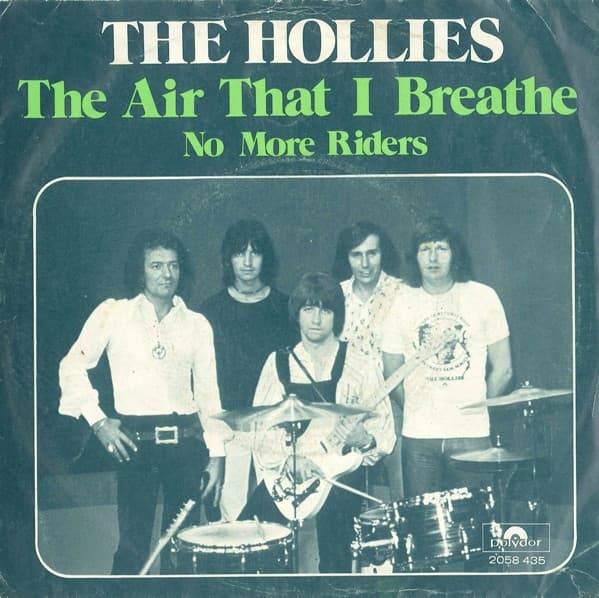
“The Air That I Breathe” by The Hollies: A Nostalgic Resonance of Melancholic Melody
In the pantheon of classic rock ballads, “The Air That I Breathe” by The Hollies occupies a sacred space, resonating through the ages as a profound expression of longing and contentment. Written by the talented duo, British-Gibraltarian singer-songwriter Albert Hammond and English lyricist Mike Hazlewood, this song emerged as a standout track of the early 1970s, encapsulating the emotional zeitgeist of its time. It soared to the upper echelons of the charts, securing a number two spot on the UK Singles Chart in early 1974, and was notably the last major hit from The Hollies.
The allure of “The Air That I Breathe” lies not just in its lyrical depth but also in its lush orchestration. Featuring a poignant string orchestra arrangement accompanied by a subtle horn section, the song offers a rich auditory tapestry that underscores its thematic essence. The recording was praised for its “potent material” and “super interpretation,” according to contemporary reviews from Record World. This critical acclaim was matched by commercial success, as the song also reached number six on the Billboard Hot 100 in the United States and number three on the Adult Contemporary chart. In Canada, it climbed to the fifth position on the RPM magazine charts, further cementing its international appeal.
Beyond its immediate success, “The Air That I Breathe” has had a lasting impact on the music industry, influencing subsequent generations of musicians. Most notably, the English rock band Radiohead acknowledged borrowing the chord progression and melody for their iconic 1992 song “Creep”. This intertextual relationship between the two songs underscores the timeless nature of The Hollies’ ballad, highlighting its enduring influence on rock music.
The song’s thematic exploration of existential satisfaction, articulated through lines like, “All I need is the air that I breathe, and to love you,” speaks to a universal human experience. Its emotional resonance is amplified by the masterful vocal delivery, which conveys a poignant blend of vulnerability and serenity. This emotional depth, combined with the song’s melodic and harmonic richness, makes “The Air That I Breathe” a quintessential ballad that transcends its era.
As we look back on the legacy of “The Air That I Breathe,” it stands as a testament to the power of music to capture and convey deep, often inexpressible feelings. It remains a beloved piece in the repertoire of classic rock, continually finding new audiences and resonating with listeners across different generations. The song’s journey through the charts and its influence on other artists exemplify its role not just as a musical achievement but as a cultural touchstone. For many, it continues to be a source of solace and inspiration, a melodic reminder of the essential joys and sorrows of life.